It's End-of-year Incentive Time, but One Deal Stands Out
Snow has already touched Minneapolis pavement, meaning it’s time for automakers to hurry up and clear out 2017 models. Special offers, like the coming winter, are rolling in fast.
Not surprisingly, many of the end-of-year incentives target the increasingly unloved passenger car segment. If two or four doors and a trunk is your bag, you’re in luck, though crossover shoppers aren’t being ignored in the rush to unload old inventory. However, if you’re a fan of the Big H, and especially its sportier offerings, Christmas might have just arrived early.
Cadillac's Throwing Shade at Lincoln (and Money at Lincoln Owners)
Despite the addition of a corporate split grill a few years ago, there’s no denying Lincoln’s outgoing Navigator is one old piece of kit. As such, the glitzy premiere of the new-for- 2018 Navigator heralded greater full-size Lincoln SUV sales not just from new buyers, but returning ones.
Having seen what Dearborn was up to, it seems some inhabitants of the Renaissance Center decided to try and spoil Lincoln’s fun. If you’re the owner of a 1999 or newer Lincoln vehicle who’s thinking of maybe getting into a new Navigator, Cadillac would like you to know there’s 5,000 smackeroos waiting for you on the hood of your nearest Escalade.
There Just Might Be a Kona Under the Tree This Christmas
Desperate eager to fill holes in its product lineup and put some bounce in its sales step, Hyundai unveiled the subcompact Kona crossover earlier this year, with the model arriving on North American shores in the first quarter of 2018. The Kona is just one part of Hyundai’s revamp of its crossover lineup — and its culture.
More crossovers, bigger and smaller crossovers, EV crossovers, and faster crossovers make up Hyundai’s short-term goals. By “faster,” we’re referring to the development cycle, unless the brand has some hot “N” action waiting for one of its cargo-friendly models. Caught off guard by the utility vehicle craze, Hyundai wants to pare its product planning window down from three years to a year-and-a-half, allowing a quicker response to new market trends.
But the first step towards a more agile Hyundai Motor Company is the Kona. Small, cladded, and efficient, the 2018 Kona might arrive sooner than planned.
Obituary: Range Rover Evoque Coupe, 2012-2017
Fans of high-riding, luxury-branded, two-door SUVs were saddened this week to learn of the demise of the Range Rover Evoque Coupe.
Aged six model years, the Range Rover Evoque Coupe is survived by its five-door and convertible brothers. It was preceded in death by any semblance of off-road capability and the proper use of turn signals.
GM Opens the Taps After Strike Depletes Chevrolet Equinox Supply
The deal reached with striking autoworkers in Ingersoll, Ontario, last month prevented the supply of hot-selling Chevrolet Equinox crossovers from reaching critical levels, but we now know just how bare the cupboard was.
After a high of 74 days of supply in June, rising sales meant inventory of the newly redesigned compact crossover shrunk to 53 days’ worth at the beginning of September, shortly before the month-long strike began. It plummeted thereafter. With another month of Equinox sales gains under its belt, GM is busy making up for lost production.
Buick Poised to Become GM's Greenest Brand - If the Public Wants It
The General Motors division, known for past land yachts like the Electra 225, Roadmaster, and Riviera, will become the automaker’s cleanest in the years to come. Whether that holds true in the United States market depends on a lot of things, including whether lobby groups succeed in saving the marked-for-extinction EV tax credit.
Duncan Aldred, vice-president of sales and marketing for GM’s Buick and GMC divisions, claims the near-luxury Buick badge will appear on the company’s future electric vehicles. However, given the shaky state of the EV market in America, new Buicks will head to greener pastures first.
Europeans Slowly Fall Victim to Pickup Truck Fever
Don’t worry, they aren’t suffering. As shown by the rise of pickup trucks as daily drivers and family haulers in North America, Europe’s burgeoning love affair with versatile light trucks isn’t hurting the owners. It’s traditional passengers car makers who must worry.
Sales stats arriving from the Continent show a marketplace that’s increasingly different from years gone by. The increasing popularity of SUVs and crossovers in the land of diesels, manual transmissions, and small displacements is nothing new, but the exploding popularity of honest-to-God pickups is.
Truck Buyers Made a Choice in October (and Chose the Bigger One)
So diverse are the trim levels available in a modern pickup truck, it wouldn’t be shocking to see automakers begin offering a “Scotsman” edition, complete with three-on-the-tree shifter, for buyers accustomed to eating beans out of a can. On the other end of the ladder, surely “Limited,” “Platinum,” and “Tungsten” fall short in the luxury trappings offered within their leather-trimmed cabins. Buyers clearly need a wood-panelled humidor for their stogies.
Suffice it to say that automakers are making the purchase of a pickup truck more appealing than ever, and in October, buyers did their duty. October 2017 was a boffo month for light truck sales, with every full-size truck line recording rising year-over-year sales in the United States. Unfortunately, but not all that unfortunately (according to accountants, anyway), buyers offered a raised middle finger to mid-size pickups sold by those same automakers.
Say Goodbye to EV Tax Credits Under New GOP Tax Plan
It’s the last thing Elon Musk wants to hear and it’s likely not something General Motors will be too pleased about. Contained within the tax plan introduced by House Republicans Thursday is the elimination of a huge driver for electric vehicle sales — the $7,500 EV tax credit.
Automakers, and especially the two mentioned above, already stood to lose their credits in the near future (there’s a 200,000-vehicle-per-manufacturer cap), but the new tax bill would see the buyer incentive permanently removed, not renewed, as many had hoped. Such a move could slam the brakes on a still-fledgling segment in the U.S.
America's Love for Luxury SUVs Is Screwing With Off-lease Sedan Sales
North America’s love affair with SUVs and crossovers arose so suddenly and with such passion that manufacturers were left scrambling to meet demand. Luxury brands certainly aren’t exempt from this but, unlike mainstream marquis, the sudden shift in product demand has thrown those marques a bit of a curveball.
Since prestige brands tend to possess substantially higher leasing rates than their more-affordable contemporaries, luxury automakers are getting stuck with off-lease sedans that nobody seems to want. While that’s terrible news for corporate accountants, it’s good news for anyone looking for a good deal on a used Lexus ES or Audi A4.
Let's Go All the Way: Chevrolet Bolt Increases Its Lead Over Faltering Volt
Never mind competing with EVs from other manufacturers. With each passing month, it becomes ever clearer that the all-electric Chevrolet Bolt competes directly with another General Motors stablemate: the Chevrolet Volt.
In October 2017, the Bolt — first sold last December and available nationwide since mid-summer — pushed into second place out of all plug-in vehicles sold in the United States, muscling out the Tesla Model X in the process. In doing so, it increased the sales gap between it and the range-extended Volt.
When buyers hit up a “dinosaur” legacy automaker for a green car, it seems they prefer going all the way — once-revolutionary gas generator be damned.
U.S. Auto Sales Brand-by-Brand Results: October 2017 YTD
It was only a mere blip, the year-over-year increase reported by the U.S. auto industry in September 2017. After eight consecutive months of decline, auto sales grew in September. But October’s results once again manifested a gradual and marginal decline.
U.S. auto sales slid roughly 1 percent in October 2017 thanks in large part to sharp decreases at Fiat Chrysler Automobiles’ Dodge brand and a 15-percent Hyundai drop. Chrysler, Fiat, Jaguar, and Maserati were the only other brands to report double-digit percentage losses.
Tesla Shares Slip as Elon Musk's Reassurances Fall Flat
It’s now Tesla that’s been disrupted.
For all of the Silicon Valley speak about “disrupting” the automotive industry, and despite some very interesting successes in doing just that, Tesla is still struggling to actually get cars to market.
That’s understandable to an extent – the company is small, with limited experience. But CEO Elon Musk has talked a big game, and thus far not delivered on his promises.
Wall Street, predictably, has noticed.
QOTD: Fly or Flop? New Wagons Brave Rough North American Shores
Two new models are entering the not hot wagon market in North America. While one wagon entry is aimed squarely at the near-luxury market, the other aims higher and challenges established luxury wagons.
Our question today is this: Will either of the models work?
Hope for Hyundai? China Agrees to Ignore South Korea's Missiles
When it comes to the positively frosty relationship between China and South Korea, this is the part of the movie where the two countries bump into each other at the bookstore and realize they should work out their troubles instead of giving each other the silent treatment. You know, for the kids.
For South Korea, China’s decision to warm up the relationship — which soured after the jittery country placed U.S.-supplied defensive missiles on its soil — is the best news its auto manufacturing sector has heard in ages. Perhaps soon it won’t be frowned upon to own a Hyundai or Kia in Beijing.
In With the Old: FCA Plans to Ram Its Way Through 2018
Unless you’ve been living under a rock, you know Ram will drop a new half-ton pickup at the North American International Auto Show in Detroit in January. It’s a big gamble redesigning a cash cow, lest the truck faithful turn up their noses at the new styling.
In the past, manufacturers have hedged their bets by simultaneously producing both the new and old styles, such as when Ford offered both the F-150 and F-150 Heritage in 2004. Now, Ram appears poised to deploy the same strategy in 2018, according to bossman Sergio Marchionne.
Eager for Avenir Cash, Buick Knows It Can't Go Full Denali Yet
Denali. It’s the Ford LTD of trims. Just take an existing model, add a dash of content and a sprinkling of chrome, and boom — a significantly inflated MSRP and legions of willing buyers. So impressed by GMC’s Denali sub-brand was Buick, executives decided it needed one of its own.
Enter the Avenir sub-brand, which serves as the top trim podium for the redesigned 2018 Enclave. Not only is Avenir designed to milk larger volumes of dollars out of existing Buick products, it’s also meant to draw more eyes to the brand — something Buick needs now, not later.
Still, despite its high expectations for the Avenir experiment, Buick knows it can’t come in too hot.
Volume Booster: Toyota's RAV4 Hybrid Gets a Price Haircut
Even though it represents a small slice of the model’s overall volume, Toyota owes a lot to the hybrid version of its top-selling RAV4 compact crossover. Without it, the RAV4 wouldn’t actually be the United States’ top-selling compact crossover.
Through the end of September, Toyota sold 36,352 hybrid variants, pushing the RAV4 nameplate ahead of the Nissan Rogue/Rogue Sport family. Sales of the hybrid model are up 10 percent this year. Realizing it has a good thing on its hands, Toyota seems eager to get more RAV4 Hybrids into the hands of green-car shoppers looking for more room to go with their fuel economy.
The automaker is now planning a new entry-level trim for the 2018 RAV4 Hybrid.
End of the Line for Nissan's Z?
Z is the last letter in the alphabet, and the current Nissan Z might be the last one in the company lineup.
At this year’s Tokyo Motor Show, Philippe Klein, Chief Planning Officer for Nissan, was decidedly non-committal when asked by media in attendance about the Z car’s future. This is stance is not new but, this time, the exec’s answer came with a few more details.
More Korean Crossovers? Ssangyong Isn't Giving Up on the United States
Hyundai and Kia did it, so why not Ssangyong? The India-owned Korean automaker has been itching to expand its horizons for years, but tentative plans to invade the Chinese car market have fallen victim to bad timing and geopolitics. Now, the company’s board is weighing a U.S. entry.
It’s not the first time Ssangyong Motor, owned by Mahindra & Mahindra, has eyed the United States for a big volume boost. Early last year, the automaker and its parent company temporarily shelved a proposed 2019 U.S. expansion plan, with Ssangyong’s CEO warning it could “make or break” the company.
Well, the idea’s back. With Ssangyong eager to land on American shores by 2020, a new report says the company has already made its decision.
Two Classes of Toyota-built Sports Coupe and the $5 Difference
With the aggressively styled LC 500 garnering most of the Lexus coupe headlines, what with its eight-cylinder engine and look-over-here sheetmetal, its RC stablemate often gets short shrift. Meanwhile, the more attainable Toyota 86 (formerly the Scion FR-S) seems to make headlines for not offering extra horsepower than for anything else.
America is not a forgiving place for coupes these days.
Still, which of these rear-drive Toyota-built coupes holds the most appeal to a buyer? The 86’s handling and youthful intentions aside, it’s arguably the RC, as Lexus’s coupe offers more interior room, horsepower, and clout. Even the base RC 200t, which becomes the RC 300 for 2018, brings a 241-horsepower turbocharged 2.0-liter to the table, handily besting the 86’s turboless 2.0.
Of course, it’s not really a fair comparison. The price gulf between the two models is quite significant. Or is it?
Mighty Truck Sales (and Cost Cutting) Fuel Ford's Q3 Income
Ford Motor Company’s eagerness to quench North America’s insatiable thirst for light-duty pickups and SUVs drove the company to earn $1.6 billion in the third-quarter of 2017, according to an earnings report from Ford.
Also helping boost the automaker’s bottom line were some tasty foreign tax credits and an accountant’s best friend: cost reductions.
Toyota Pares Down Mexican Plant Plans, but 100,000 Extra Tacomas Are Still on the Way
The only thing better than two plants producing North America’s hottest-selling midsize pickup is three plants churning them out. That’s a big part of Toyota’s plan to stay ahead of General Motors and future competitors like Ford in the small yet vital segment.
Despite making every effort over the past year to build more Tacomas at its Tijuana, Mexico, and San Antonio, Texas, assembly plants, those facilities are maxed out, leading to Toyota’s August decision to punt Corolla production (initially bound for a planned Guanajuato, Mexico, plant) to a new $1.6 billion U.S. facility in the near future.
On paper, the Guanajuato plant aimed to produce 200,000 Corollas per year. Well, those plans have changed. Toyota now says it will drop its investment in the plant from $1 billion to $700 million, with production capacity dropping by half. That still means 100,000 extra Tacomas for a hungry customer base.
Made for America, the Nissan Titan Expands Its Horizons
In terms of monthly U.S. sales, Nissan’s line of Titan pickups ended September in the number nine spot, ahead of the midsize GMC Canyon but behind its own paleolithic Frontier. While the 3,773 Titan and Titan XDs sold last month represent a tiny fraction of the 82,302 Ford F-Series models sold in the same time frame, it’s still a 52-percent increase from the same month in 2016.
Year-to-date, however, Titan sales are up 224 percent in the United States. That’s enough to get Nissan thinking about the pickup’s potential in markets not dominated by tried-and-true nameplates from the Detroit Three.
It seems Nissan’s planning to seize some ground for itself on fertile — but traditionally unfriendly — terrain. Looking back, the looming push was obvious.
As Chrysler Fades Away on the Global Stage, Right-hand-drive 300s Remain in Production
On the surface, Fiat Chrysler Automobiles’ Jeep brand is everything a modern-day brand should be. SUVs and crossovers, a looming pickup truck, and no cars. This is what the world wants.
On the opposite side of the coin, Chrysler is the brand seemingly no one, save for North American minivan buyers and a shrinking pool of traditional luxury sedan devotees, wants. Year-to-date, sales of the brand’s two-model U.S. lineup is down nearly 10 percent.
Overseas reports claiming FCA has ended production of right-hand-drive models at its Ontario, Canada assembly plants paint an even grimmer picture, even though the core RHD Chrysler model — the rear-drive 300 — is not, apparently, extinct.
Don't Expect Any Rebadged Nissans or Co-developed Cars in Mitsubishi Showrooms Anytime Soon
Last year, Nissan answered Mitsubishi’s prayers by purchasing a majority stake in the struggling Japanese automaker. The company had started out strong in North America at the dawn of the 20th century, with U.S. sales topping 345,000 in 2002. Six years later, volume had fallen by nearly 85 percent.
Mitsubishi was a dead brand walking, at least on these shores.
Now adopted by a wealthy parent, Mitsubishi has access to Nissan’s technology and platforms, but don’t expect the two automakers to start joint production of new products anytime soon. Only two new models — one with a horrible name, the other a long-delayed niche vehicle — will appear in showrooms before the end of the decade.
Still, Mitsubishi is planning for a 30-percent bump in U.S. sales by early 2020. Product isn’t the sole player in the company’s new growth strategy.
Bumper Crop of Flood-damaged Vehicles Has NICB Worried About Your Next Car
From the Texas coast to Georgia, the southern U.S. took a long-delayed pounding this summer after years of hurricane “drought.” Hurricane Harvey struck, then lingered for days, over the Corpus Christi-Houston area in late August, sending hundreds of thousands of vehicles to the salvage yard. Hurricane Irma followed shortly thereafter, striking Florida before moving up into the southeastern states.
Perhaps aware of Texas’ reputation, Harvey cut the largest swath through the country’s rolling stock, with roughly 422,000 insured vehicles now awaiting salvage auctions. Irma’s wrath adds a further 215,000 to the flood-damaged mix. For the National Insurance Crime Bureau, it’s not necessarily those vehicles that are leading to restless nights — it’s ones with owners unable to make an insurance claim.
To Date, There Are 13 Volvo V90 Cross Countrys in America for Every Standard Volvo V90
Through the end of September 2017, Americans have registered 13 times more Volvo V90 CCs than Volvo V90s, clarifying with purchasing habits what every auto industry observer, casual or professional, already knew.
Volvo’s surely not surprised, either. After all, if you want to acquire a low-slung Volvo V90, Volvo forces U.S. customers to actually order the car. (Perish the thought.)
Even less surprising is the frequency with which Volvo now sells wagons. Combined, the four V60 and V90 variants account for fewer than one-in-10 Volvo USA sales through the first three-quarters of 2017.
Ian Callum Wants Another Jaguar XK, Seems Rather Unhappy the Jaguar XK Was Killed Off
“The XK being dropped was much to my frustration.”
– Jaguar design director Ian Callum
The Jaguar XK ended its 19-year-long run after the 2015 model year, undone by disappearing demand and the success of the smaller, more affordable Jaguar F-Type. But it wasn’t supposed to be this way, Jaguar design director Ian Callum says. The XK was supposed to roll along in third-gen form alongside the first-gen F-Type.
“The F-Type was never meant to kill the XK,” Callum tells Autocar.
In fact, despite the design work that had already begun on the next Jaguar XK — a car that never materialized — the marketing execs at Jaguar didn’t see the need for two coupes. The third-gen XK never enjoyed any engineering development.
Yet Callum’s outsized influence at Jaguar appears to be producing XK-shaped fruit in Jaguar’s product planning department. While there’ll likely be a new Jaguar F-Type first, you can begin inspecting your local Jaguar showroom for the next Jaguar XK in 2021.
No Fixed Abode: Sorry, ISeeCars, but When It Comes to Electric Car Resale, It's Still Dog Bites Man
Over the past twenty or so years, I have come to firmly believe that the largest problem facing humanity is lack of consciousness. Sounds trite, doesn’t it?
But I’m not talking about “mindfulness” or “caring” or any of that New Age woo-woo. What I mean by “consciousness” is the same thing that Douglas Hofstadter means: the ability to temporarily step outside the actions you are performing, or the thoughts you are having, and consider them from a distance, as a whole. If you can’t do that — if you are unable or unwilling to occasionally evaluate your behavior, your preconceptions, and your desires as if they belonged to someone else — then you are truly no more intelligent than a dog or a computer program or a hurricane.
The conscious individual periodically steps out outside his situation so he can consider whether what he is doing makes any sense whatsoever. You can think of it as “the state of stuckness,” as Robert Pirsig did, or you can call it a “strange loop” as Hofstadter does, but you should learn how to do it. Without that consciousness, you will always be the victim of your environment and whatever information you consume. Lack of consciousness makes people susceptible to everything from autonomous-car crashes to investment bubbles to conspiracy theories.
In this day and age, one of the biggest pitfalls facing the unconscious among us is susceptibility to so-called “fake news,” which I will define here as any news that reinforces our beliefs and cherished ideas but which cannot stand up to even a modest bit of examination. Fake news is the processed sugar of brainfood and, just like processed sugar, we consume it because it makes us feel good in the short term. (Believe me, I know.) What follows is the story of a particularly tempting morsel of processed sugar. Call it a funnel cake, maybe, one that was eagerly consumed everywhere from The Drive to CBS News.
Alfa Romeo Isn't Going to Meet Its 2017 Sales Targets - Blame China
Alfa Romeo is on track to sell between 130,000 and 140,000 vehicles around the globe in calendar year 2017, a far cry from the 170,000-unit performance Sergio Marchionne expected Alfa to put together.
U.S. sales remain predictably low by the standards of rival brands but are rising quickly now that the Stelvio SUV is in action. But on the other side of the Pacific, new rules that limit automobile manufacturers from forcing dealers to accept stock, Automotive News Europe reports, has sorely limited sales in China. Thus, rather than the 2,666 Alfa Romeo Stelvios shipped to China in July, only 227 landed in China in August.
The result? Alfa Romeo is cutting back production of the Stelvio and Giulia in Cassino, Italy.
Brexit Seems to Have Really Screwed Up Britain's Car Market
While some of Europe saw modest auto sale gains through the first nine months of 2017, the region has mirrored North America’s decline in deliveries since the end of the summer. The United States saw eight consecutive months of declining sales this year, with a positive bump in September and better than expected volume in Canada.
Europe, meanwhile, saw the inverse. Passenger car registrations fell 2 percent year-over-year to roughly 1.43 million deliveries in September, despite August seeing a 5.6-percent improvement. Overall, 2017 has the makings of a unsatisfactory sales year for both regions. But Europe seemed to be doing alright before the U.K. suddenly stopped buying cars.
British registrations took a massive nosedive after Brexit. By September, it represented a monthly decline of 9.3 percent, compared to Germany’s 3.3 percent slide. Even though the rest of the continent saw a gain in sales, having Europe’s two largest markets lagging guaranteed the net loss.
This Is the New Audi A7… 's Silhouette
At 1 p.m. ET on Thursday, October 19, 2017, the second-generation Audi A7 will be unveiled. Based on the silhouette Audi has already revealed, and based on Audi’s historic design habits, the second-generation A7 will appear remarkably similar to the first-generation Audi A7.
At some point in November, Audi USA will sell its 50,000th A7, making the hatchbacked A6 a low-volume car even by the standards of America’s third-ranked German luxury brand. Yet as a style and status symbol, the A7 remains a model of great importance to the overall Audi lineup.
The Discontinued Lexus CT200h Is Actually Updated for 2018
This is not the Lexus CT200h that was sold in the United States for seven model years.
This is the updated 2018 Lexus CT200h.
Lexus’ U.S. operations no longer wishes to bother with the CT, so 2017 is the end of the line for the hybrid hatch in America. But Lexus’ local discontinuation of the CT comes just in time for Lexus to update the CT200h for other markets.
It Turns Out Cadillac Dealers Still Want a Few Cars Kicking Around
Imagine a traditional luxury car buyer — yes, some still exist — walks into his or her local Cadillac dealer to check out the radically refreshed 2018 XTS. Naturally, the old XTS is hanging out in the parking lot, quietly serving as potential trade-in. After entering the dealer, a salesperson ushers our buyer over to a virtual reality machine to check out the many glories (and options) that await in the new model.
On the way to that machine, the buyer passes zero Cadillacs. There’s not a CTS or CT6 or hot-selling XT5 in sight. An unlikely scenario? Perhaps. A little weird? Certainly to a repeat (read: aged) buyer. It seems small Cadillac dealers definitely felt that way, as low-volume sales locales soundly rejected head office’s plan to do away with traditional showrooms and physical cars.
As a result, Cadillac has given the ominous-sounding Project Pinnacle a makeover.
Three-Row Honda CR-V is More Popular Than Honda Expected - You Still Can't Have It
If Australia is an effective test bed for American tastes — and it most definitely isn’t — then the three-row version of the fifth-generation Honda CR-V would be a hit stateside.
We told you way back in April that there were plans afoot at American Honda for a utility vehicle to slot in between Honda’s two-row CR-V and three-row Pilot. We then watched, intrigued, at the level of interest among TTAC readers when we showed you images in July of Honda Australia’s three-row CR-V. Could this be the SUV Honda plans to squeeze between the CR-V and Pilot? At the time, Honda told TTAC, “We can’t make comments about any future possibilities.”
So you’re telling me there’s a possibility.
There likely is only the most limited sort of possibility. The third row can’t be linked with all-wheel drive, for starters. It’s obviously snug. And American Honda already has the Pilot, which Honda does not offer in Australia.
Nevertheless, if the Australian test bed is looked upon as a case study, American Honda would discover a three-row, seven-seat CR-V that turns out to be more popular than expected.
Hamtramck Going Dark as GM Large Sedan Inventories Balloon
It’s going to be a black Christmas at the Detroit-Hamtramck assembly plant this year. Amid rising inventory levels for the Cadillac CT6, Buick LaCrosse, Chevrolet Impala, and Chevrolet Volt, General Motors plans to shut off the lights for the rest of the year.
Blame the American consumer’s rapidly changing automotive tastes.
2018 Volkswagen Jetta GLI Kills the Manual Transmission
For the 2018 model year, Volkswagen of America is adopting an entirely different approach to its sports sedan transmission lineup than Honda and Subaru.
Unlike the Honda Civic Si, which is available exclusively with a manual transmission, and unlike the Subaru WRX, which is available with a manual transmission or a continuously variable automatic, the 2018 Volkswagen Jetta GLI will drop the manual transmission option.
American Minivan Sales Plunged to a 32-Month Low in September 2017
Minivan sales tumbled 16 percent to only 33,358 units in September 2017, the lowest total for America’s people-carrier sector since January 2015.
Between the disappearance of two nameplates (Nissan Quest and Mazda 5), limitations on Dodge Grand Caravan sales during a period of plant transition, and further decreases from the aging Kia Sedona and new Honda Odyssey, minivan volume fell 6,460 units below September 2016’s total and nearly 11,000 units shy of September 2015’s tally, and more than 10,000 units short of 2017’s monthly average through the first two-thirds of the year.
A positive spin is difficult to find.
Goodbye Volkswagen Scirocco, We Hardly Knew Ye
The Volkswagen Scirocco has reached the end of the line as the death bed for the third-generation model receives its patient after a prolonged but largely unsuccessful decade.
Closely related to the Mk5 Volkswagen Golf — not the Mk6 or Mk7 that were introduced during its tenure — the Scirocco always faced headwinds in the form of Volkswagen’s own more practical Golf GTI.
Although earlier iterations of the Volkswagen Scirocco and its Corrado successor were marketed in America, the latest Scirocco never made it across the Atlantic.
“That’s a piece of the lineup that I would dearly love to see here,” then Volkswagen of America CEO Jonathan Browning said four years into the Scirroco’s tenure. The concerns, of course, were related to the fact that the Scirocco would cannibalize the GTI, and vice versa.
And for that very reason — the fact that the Scirocco couldn’t succeed alongside the Golf — the Scirocco’s European experiment is ending before a rumored fourth-gen model could ever dream of making it in America.
Toyota Reportedly Plans to Slash Half of Its Japanese Lineup Over Eight Years
Toyota Motor Corporation is considering the possibility of cutting its home market product lineup by half.
Toyota currently markets more than 60 models in Japan, but there’s no expectation that the brand will suddenly cull its lineup to just 30 models by 2018. It will be a very long process, and it’s one that is likely to have minimal impact on the United States.
But which models are likely to go first? Perhaps one of the ten vans on offer.
The 2018 Acura ILX Special Edition Is, Uh, Um… Just What the Acura ILX Needed?
It has become increasingly evident that America’s compact sedan consumers aren’t terribly interested in a semi-premium-branded version of a previous-generation Honda Civic.
Shocking.
But for 2018, the Acura ILX gains a new Special Edition. Ah, that’ll do the trick.
If U.S. Auto Sales Were Growing Like Canadian Auto Sales, Americans Would Buy 18.5 Million Vehicles In 2017
In concert with the American auto industry, Canada’s auto industry reported an all-time record year of sales in 2016.
The difference? In Canada, 2016 represented the fourth consecutive year of record sales. Another difference? Canadian auto sales just kept on growing throughout 2017. Most recently, that streak of increases included an 8-percent year-over-year uptick in September 2017. Sales last month were 16-percent stronger than they typically are in September.
Month after month after month, Canada’s auto industry just keeps on smashing records. It’s as if the U.S. auto industry posted its banner year of 17.5 million sales in 2016 and then bettered that with 18.5 million sales in 2017.
That Brief Spell in Which America Was Cadillac's Biggest Market Ended in September 2017
By the slimmest of margins, Cadillac’s U.S. operations put an end to China’s repeated dominance of Cadillac’s sales charts in August 2017.
But after Americans acquired two more Cadillacs than the Chinese did in August, normal order returned in September 2017. 49 percent of the Cadillacs sold around the world last month were delivered in China, where volume rose 38 percent, year-over-year.
Perhaps of greater consequence to Cadillac’s New York HQ is the fact that September sales not only increased in China but also in the U.S., Canada, and in its rest-of-the-world markets.
September was the 16th consecutive month of global Cadillac sales improvement. Naturally much of the credit belongs to the Cadillac XT5.
2018 Mitsubishi Outlander PHEV's Arrival Equals Good News and Bad News
Mitsubishi is by no means starting from scratch in the U.S. market — the product lineup is much too stale for that. But with a new marketing agency, Butler Shine Stern & Partners, coming on board and a new crossover, the Eclipse Cross, set to arrive at dealers soon, Mitsubishi is clearly not in the same position in 2017 that it was in 2009.
2017 is set to be fifth consecutive year in which Mitsubishi’s U.S. volume improves and the first year since 2007 in which Mitsubishi sells more than 100,000 vehicles. That’s still a far cry from 2002, when Mitsubishi sold 345,000 vehicles, but Mitsubishi has reasons to be pleased with the growth.
Perhaps more than any other change at Mitsubishi’s U.S. operations, however, the arrival of the plug-in Mitsubishi Outlander symbolizes a new day for Mitsubishi Motors North America. It is, after all, finally here after years of delay, and it’s an exclusive product for Mitsubishi’s dealers, free from direct competition. Yet while the dawn of the 2018 Mitsubishi Outlander PHEV speaks of further commitment to the U.S. market, it’s not by any means about to become a popular vehicle.
Bark's Bites: Kia's New 'Spin' on Compensation Might Mean a Change in Direction
For over a decade now, Kia has slowly but surely been moving toward doing the impossible —transitioning the brand image from “ subprime, budget, shady, and non-desirable” to “a slightly Buick-ized version of Hyundai.” In order to do this, Kia dealers have always relied on the one factor in their favor, which is the ability to sell on price. While the MSRPs on Kias aren’t too far off the competition, the stores have historically dumped new inventory at prices well below the sticker. Looking at an Altima? Why not try this Optima at $3,000 off instead?
Of course, when you operate this way, it makes it difficult for salespeople and managers to make any money, since there’s little to no profit in the deal. For over a decade, Kia has offered sales staff what’s known in the business as a “spin” every time they sell a new car — they can call into a number or log on to a website and enter a VIN-specific code for a “spin” and a chance to win a bonus that ranges from $25-500 per car. If you sell Kias for a living, this is likely how you’ve been paying your bills for as long as you can remember.
According to sources within Kia dealerships, a little over a month ago, without warning, Kia stopped its OEM incentive program for management. Then, for October, again without warning, Kia stopped the spin program for sales people, also with no explanation. Rumor has it this decision comes from the new VP of Sales for Kia Motors America, Bill Peffer, who came to Kia from a dealership group in the Pacific Northwest. Dealers tell me that they’ve repeatedly e-mailed their corporate contacts for explanation, but none is expected.
Other than a sharp increase in the mortgage foreclosure rate for Kia dealer employees, what does this mean for Kia in the States?
Ford Retiree J Mays Says German Cars Don't Look German, Reserves Particular Criticism For One Automaker
“I think the British do a pretty good job — they seem to produce cars that look British,” Ford Motor Company’s retired design chief J Mays says.
Given that Minis essentially look the same as they’ve always looked, Mays makes a good case.
But Mays tells Automotive News he’s “a big stickler for cultural relevance.” And while the man whose influence can still be seen across much of the Ford lineup — he retired three years ago — credits the Brits for bringing culture to car design, he gives no such credit to the Germans.
Aston Martin Sales Are Rising, but They're About to Rise Much Faster
Aston Martin, builder of premium British GT cars, does not sell nearly as many cars as it used to. In fact, Aston Martin’s 2017’s output will fall some 30 percent below the brand’s record volume from a decade ago.
But that’s only part of the story. Aston Martin’s global 2017 volume will be 36-percent higher than it was just last year. Moreover, Aston Martin sales will more than double in the next two years.
The Chevrolet Bolt Is Now Far More Popular Than the Chevrolet Volt
If plug-in hybrids were meant to function as a stop-gap between ICE-powered cars and fully electric cars, it may be time to consider Chevrolet gapless.
The Chevrolet Volt appeared in first-gen form in late 2010. By 2016, with the arrival of a second-generation edition, Volt sales climbed to record levels in the United States, albeit still not at the level GM originally hoped to see.
The Volt was and is a plug-in hybrid, an electric car with a range-extending gas-powered engine.
But with nationwide availability of the Chevrolet Bolt — change that V to a B for pure electricity — we’re now watching as Chevrolet Volt sales tumble. It turns out General Motors now has far more U.S. demand for its electric car than its ICE-accompanying electric car.
2018 BMW X3 Is Supposed to Become the Segment Sales Leader, but It's Priced Higher Than Key Competitors
Munich HQ has huge expectations for the third-generation BMW X3. The X3, after all, was the vehicle that ignited the compact luxury SUV craze, the vehicle that spawned competitors such as the Audi Q5, Acura RDX, Mercedes-Benz GLK/GLC, Volvo XC60, Lexus NX, and Porsche Macan. Surely the X3 has the power, the might, the capacity for sales domination, right?
“We created that segment,” BMW CEO Harald Krueger said in July. “The No. 1 approach and target I clearly have is, there shouldn’t be anyone besides us who is No. 1.”
“If somebody on my team is not performing to that, well, he has a problem,” Krueger says, making clear to BMW USA’s Bernhard Kuhnt that greater global production of the X3 will mean greater allocation, which had better mean greater U.S. sales.
BMW will not, however, seek to achieve the lofty sales goals by introducing the 2018 X3 with a price that undercuts its key rivals.
Chevrolet Equinox Inventories Dwindling, But No One's Panicking Just Yet
It was another hot month for the 2018 Chevrolet Equinox in September, especially when contrasted with last year’s sales. U.S. sales last month amounted to an 80-percent year-over-year increase, with 27,512 vehicles sold, while Canada’s 2,079 vehicles sales represented a 27-percent increase, year-over-year.
Both countries’ year-to-date tallies are on the upswing, outranking last year’s total by 22 percent in the U.S. and 27 percent north of the border. Good news for General Motors, but worrisome when you consider the main Equinox production line shut down over two weeks ago. Workers at the CAMI plant in Ingersoll, Ontario, are still on strike. Meanwhile, the amount of Equinoxes in GM’s inventory is dropping steadily.
It’s not a crisis yet, but if GM and its unionized plant workers don’t reach an agreement soon, it could turn into one.
U.S. Attempts to Convince South Korea to 'Buy American'
Officials from the United States and South Korea held a special session in Washington on Wednesday as part of U.S. Trade Representative Robert Lighthizer’s request to consider amending the two countries’ trade agreement. The joint talks serve to reassess the countries’ five-year pact, with the Trump administration aiming to diminish America’s growing trade deficit with South Korea.
One of the largest issues concerns the automotive industry. Korean rules stipulate a cap on the number of vehicles U.S. automakers can bring into the country each year that adhere to the country of origin’s safety standards. Presently, that quota sits at 25,000 vehicles per manufacturer. However, no U.S. company has ever made full use of the quota. General Motors, which is the most popular U.S. brand in South Korea, only sold 13,150 domestically built units in 2016.
Camry Crusher: Honda Civic Expands Lead as America's Best-selling Car
In many ways, September 2017’s auto sales bucked the trend. After the industry combined for decreased volume, year-over-year, in each of 2017’s first eight months, auto sales in September rose 6 percent. Meanwhile, the shrinking car sector that tumbled 12 percent through the first two-thirds of 2017 was down only 3 percent in September.
There were two big reason the passenger car decline wasn’t worse: America’s two best-selling cars.
Excluding the Honda Civic and Toyota Camry, U.S. car sales fell 6 percent. But as the clear-out of remaining 2017 Honda Accords got underway and produced 10-percent growth, the launch of the 2018 Toyota Camry generated a 13-percent uptick. Meanwhile, the Honda Civic’s 26-percent surge allowed the compact Honda to expand its lead over the midsize Camry in the race to end 2017 as America’s best-selling car.
Midst Yet Another FCA Sales Decline, Jeep Shows Powerful Signs of Life
September 2017 sales at Fiat Chrysler Automobiles decreased on a year-over-year basis for a 14th consecutive month, extending a stretch of declines that began in August of last year.
For much of that time span, the U.S. automobile industry was reporting declining sales, as well. And for much of that time span, even as total U.S. auto sales kept on sliding, SUV/crossover sales were rising. For much of that time span, Jeep sales were falling.
Technically, officially, Jeep sales kept on falling in September 2017, the U.S. auto industry’s first month of improved sales this year.
But if you’d just ignore the Jeep Patriot for a moment, we can look at a clearer picture.
Four Reasons Why September 2017's U.S. Auto Sales Picture Isn't As Rosy As It Seems
In September, for the first time in 2017, auto sales were higher this year than last.
Substantially higher.
Compared with September 2016, auto sales in America last month were 6 percent higher, far healthier than the modest sub-1-percent uptick analysts predicted. Booming pickup truck volume, big gains from America’s best-selling SUVs and cars, continued growth from trend-bucking Subaru, and rebounds at Volkswagen resulted in an industry that reported 1.5 million total sales, nearly 90,000 more than in September 2016.
The seasonally adjusted annualized rate shot up to 18.6 million, the best SAAR since July 2005, according to Automotive News. Over the last half-decade, Americans have averaged fewer than 1.3 million September new vehicle acquisitions. Last month’s result was 18 percent better than the September average.
Sunshine and roses? An end to the U.S. auto industry’s gradual slide? A sign of a perfectly healthy market? We have four reasons you should be skeptical.
U.S. Auto Sales Brand-by-Brand Results: September 2017 YTD
U.S. auto sales exceeded analyst expectations with a big 6 percent year-over-year increase to 1.5 million units in September 2017, the first monthly improvement in 2017 so far.
After auto sales fell 3 percent during the first two-thirds of 2017, big September increases from Toyota Motor Corp., General Motors, Ford Motor Company, American Honda, Nissan’s trio of brands, and numerous smaller outfits brought the sales pace achieved through the first three-quarters of 2017 within sight of 2016’s record rate. By the end of September, U.S. auto sales are down by less than 2 percent compared with last year.
Pickup trucks played a major role in September’s improvements, growing at twice the rate of the industry at large. The Honda Civic expanded its lead as America’s best-selling car on a quest to end the Toyota Camry’s 15-year run. Minivan sales plunged to barely more than 33,000 units. The Toyota RAV4 topped 42,000 sales for a second consecutive month, leading a booming SUV/crossover class.
September 2017 Was a Terrific Month For Pickup Truck Sales in America
September 2017 sales of pickup trucks rose to the highest level so far this year in the United States, jumping 12 percent to 257,864 units.
Prior to this point, truck sales had grown by less than 4 percent, year-over-year, averaging slightly more than 225,000 monthly units.
September’s big gain was fuelled almost entirely by improvements among the full-size pickup trucks that own 84 percent of America’s pickup truck market. And America’s full-size pickup truck gains were powered in large part by America’s best-selling line of vehicles: the Ford F-Series.
Tesla Blames 'Production Bottlenecks' for Trickle of Backlogged Model 3s
While the venerable Tesla Model S and X reached more customers than ever before in the last quarter, the hotly anticipated and far cheaper Model 3 stumbled out of the gate.
In a quarterly statement released yesterday, Tesla says just 260 Model 3s made it off the Fremont, California assembly line between the launch of production in late July and the end of September. Of that number, 220 made it to customer driveways. That’s not encouraging news for investors, nor for the model’s roughly half-million reservation holders, some of whom were told at launch not to expect their vehicle until the end of next year.
Mazda CX-3 Wants to Save the Manuals, Too
Every Sunday or Monday, a very generous man appears in my driveway with a new car. The same man, in not as generous a fashion, also removes a car from my driveway. The most recent exchange involved the arrival of a fourth-generation 2018 Kia Rio and the departure of the 2018 Mercedes-Benz E400 4Matic Coupe we reviewed last week.
“Chilly one today, eh?” I say.
“I’m preparing myself for some cold days in PEI this winter,” Mr. Sowerby says with a chuckle. We chat for a moment about a recent Chevrolet Traverse event that was slathered across my Twitter feed, and as Garry gets into the Mercedes-Benz to depart he says, “You’re getting a Mazda CX-3 with a six-speed stick next week.”
Huh? It can’t be. Seriously?
For real.
The Subaru Legacy Sport Utility Sedan Returns, in a Sense
What does an automaker do after the company’s three-year-old midsize sedan — the only midsize sedan with standard all-wheel drive — is slightly upgraded for 2018?
It initiates a new marketing campaign. And what must that marketing campaign entail when the car is chronically unpopular and suffering from sharp sales declines in a shrinking category? It must utilize a catchy, attention-grabbing slogan.
Thus, for 2018, Subaru gives us the rebirth of a tagline: sport utility sedan.
Only this time, unlike 1998, the Legacy SUS isn’t lifted, it doesn’t wear two-tone cladding, its tires’ lettering won’t be emboldened by white font. The 2018 Subaru Legacy Sport Utility Sedan is just a Legacy.
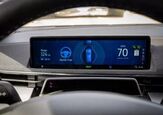
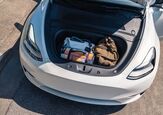


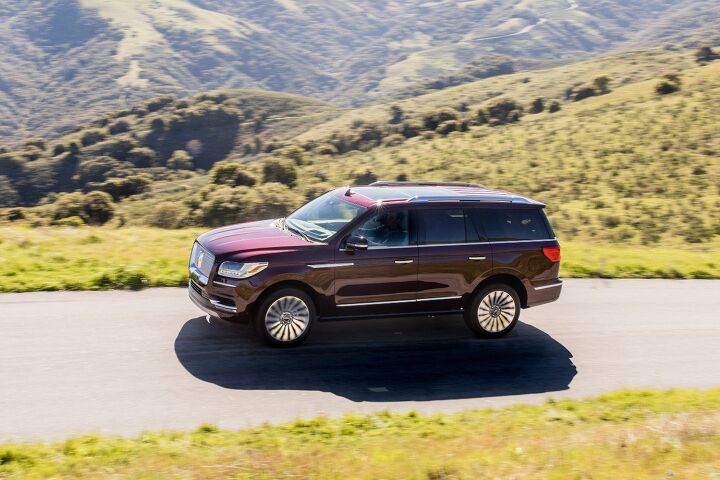


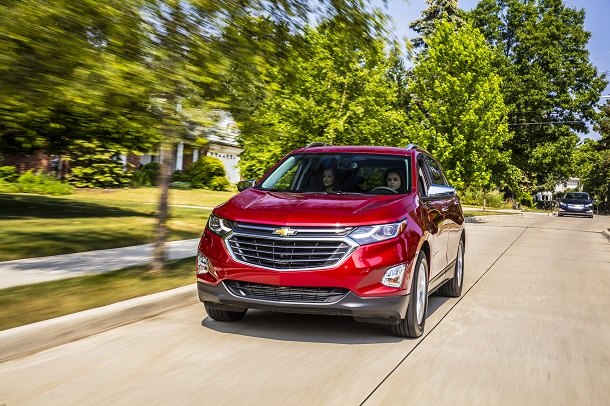
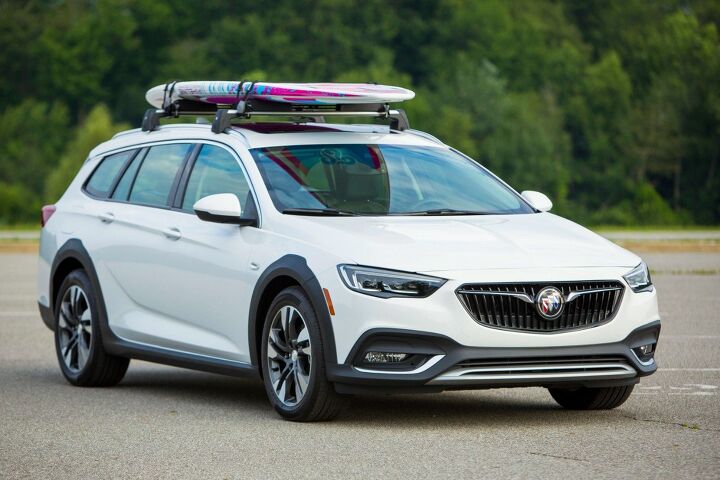
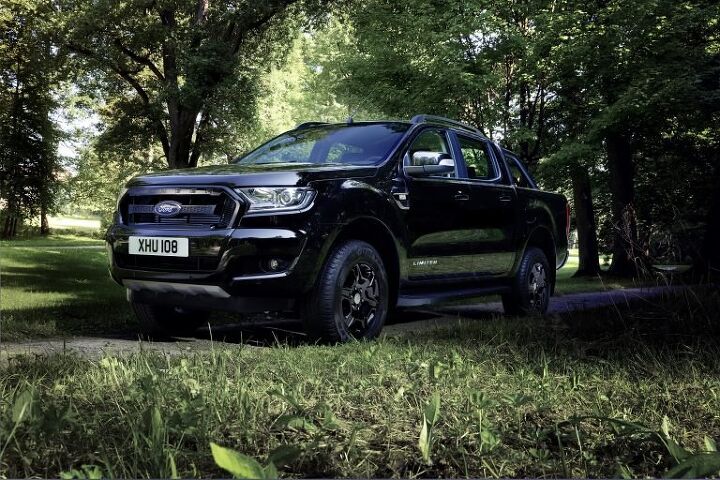


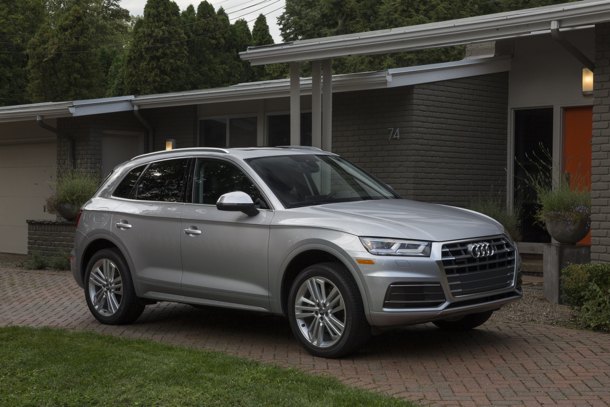
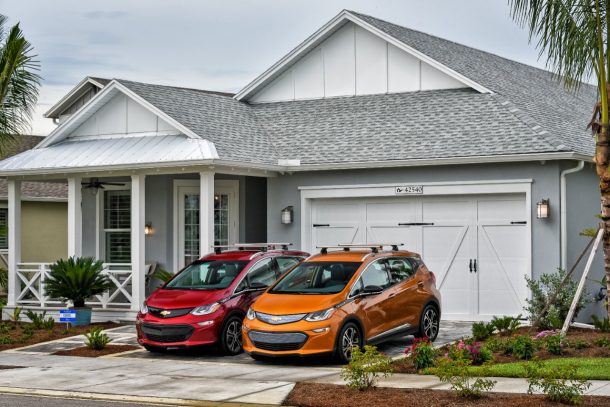

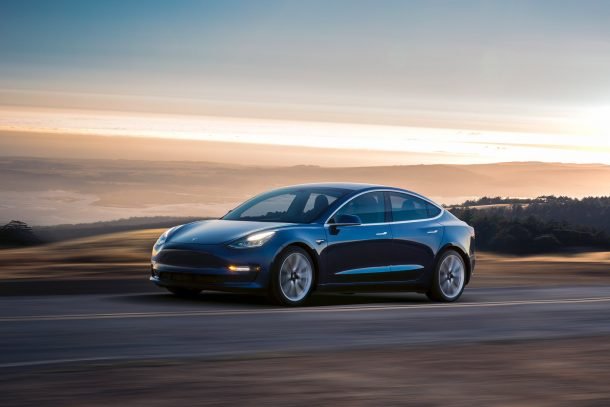
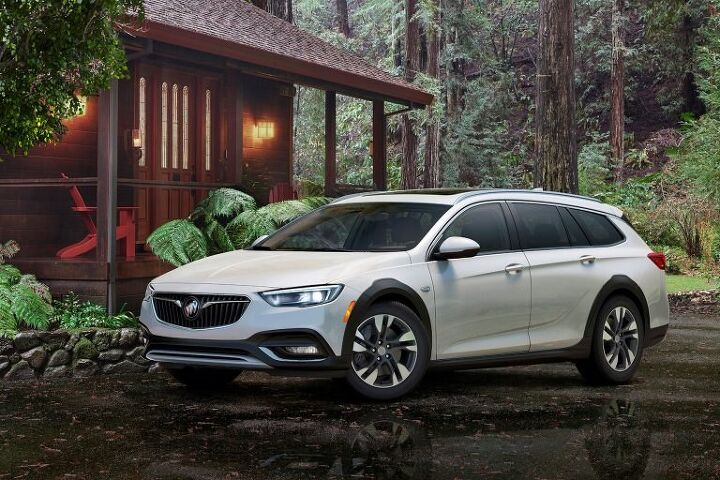
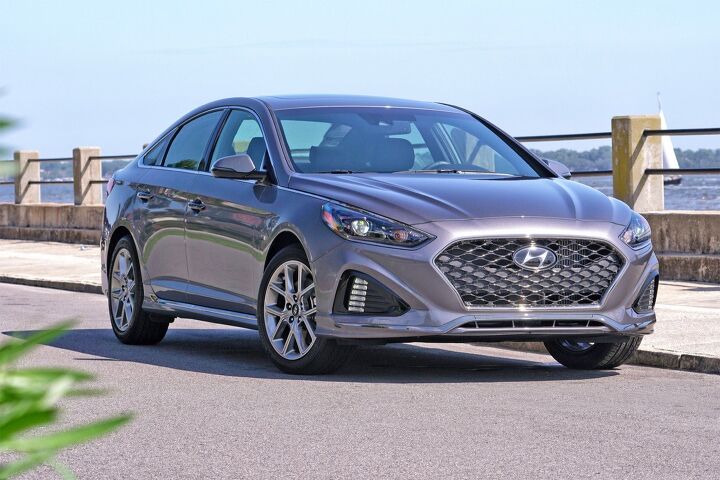

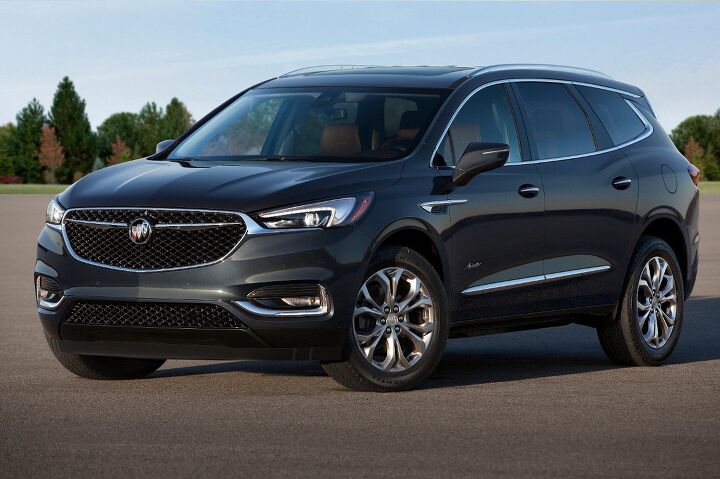
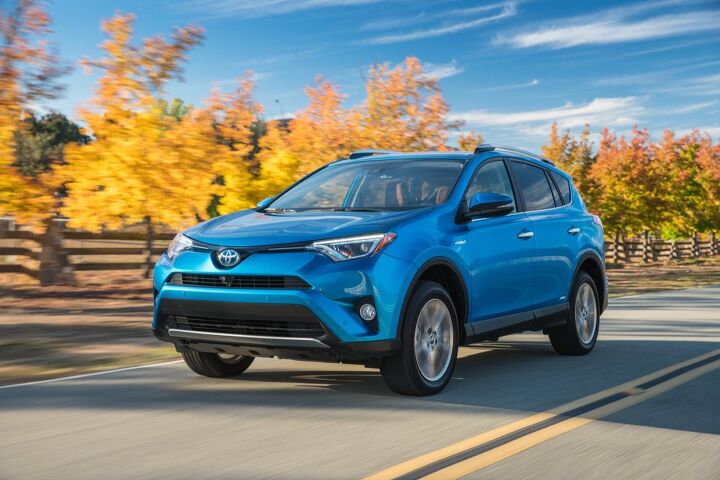

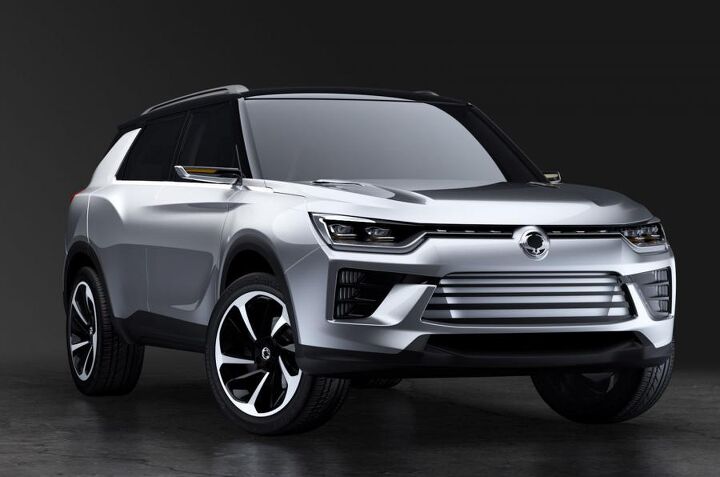

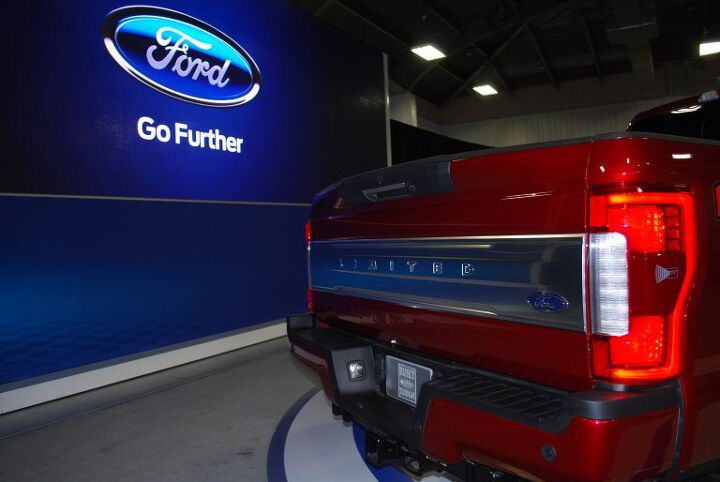

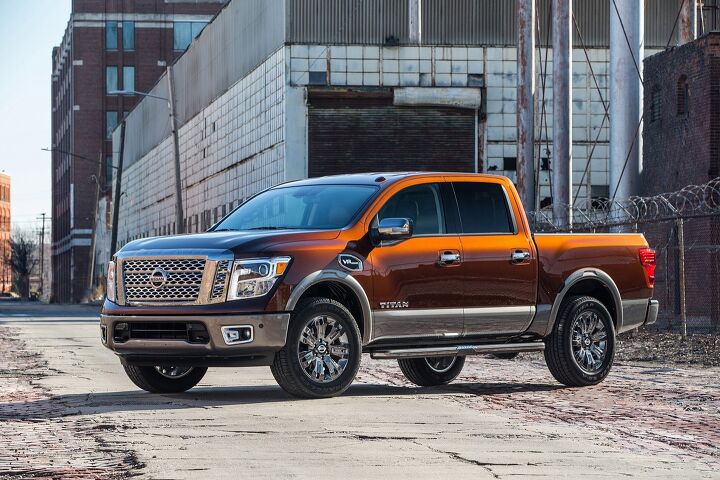






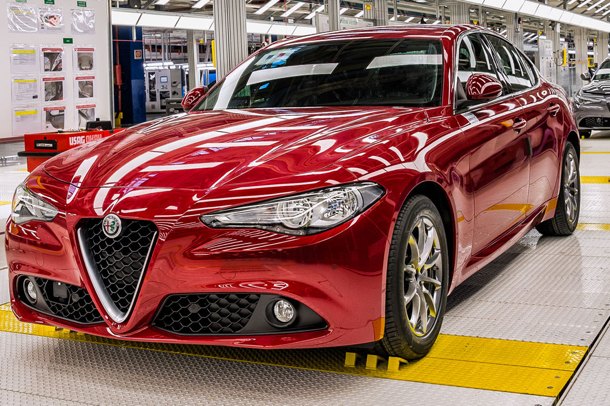

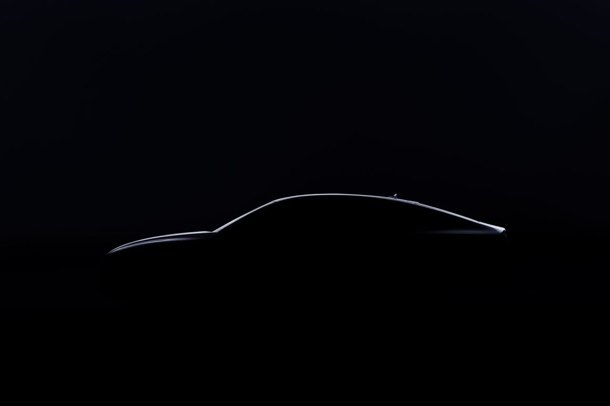


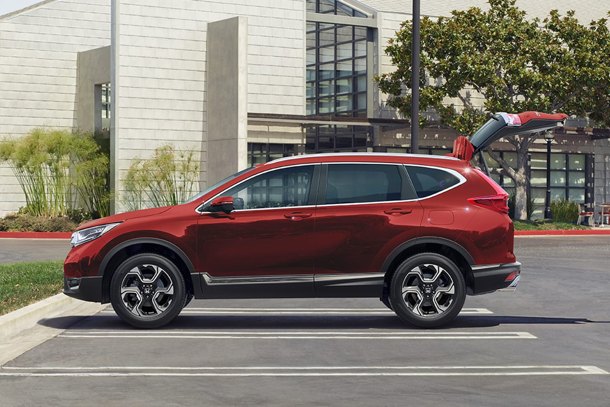
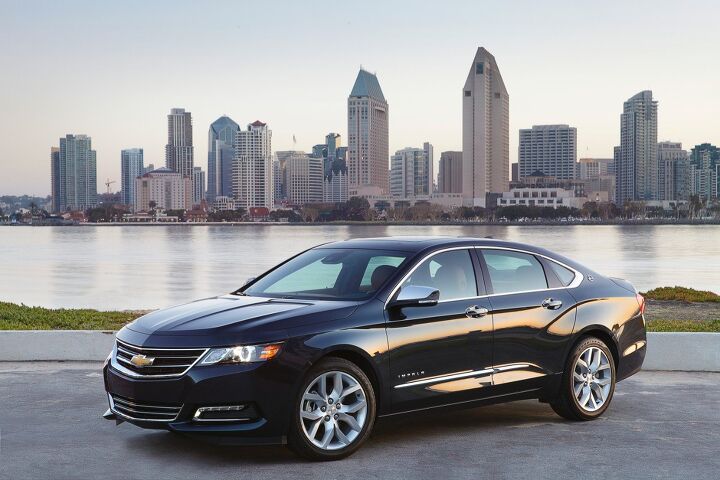
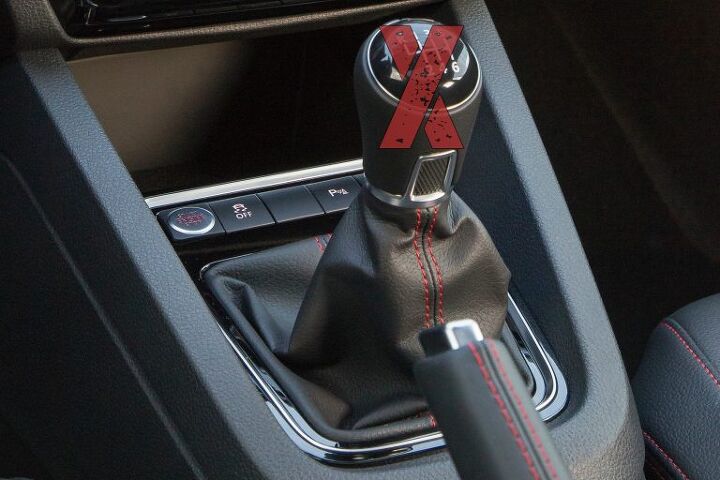
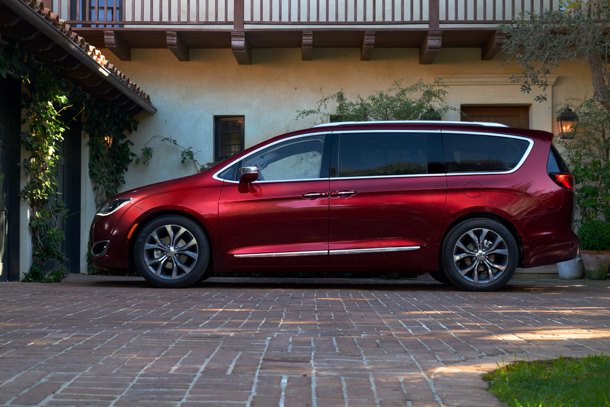
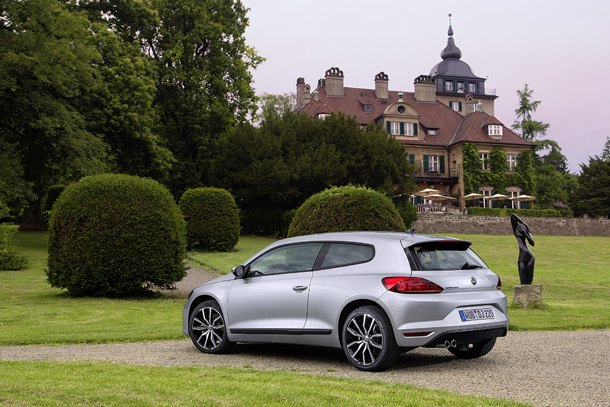
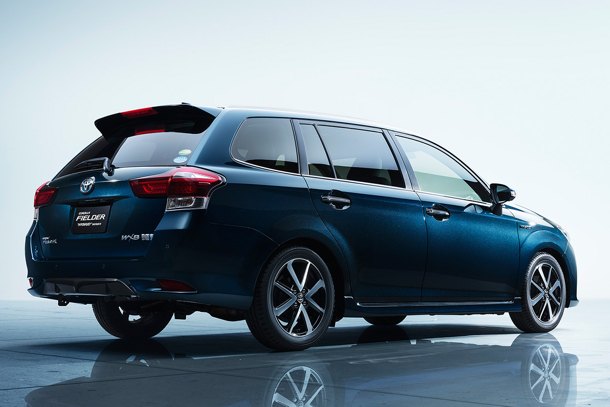
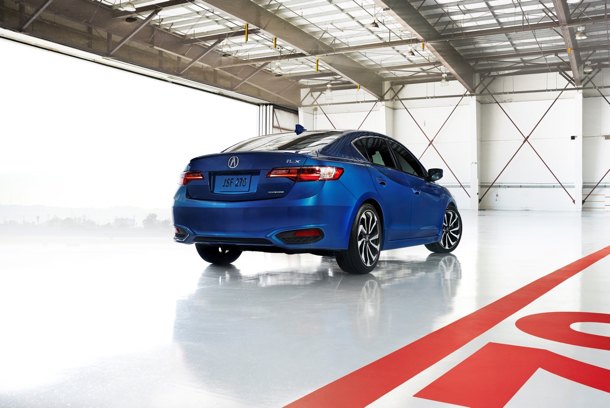



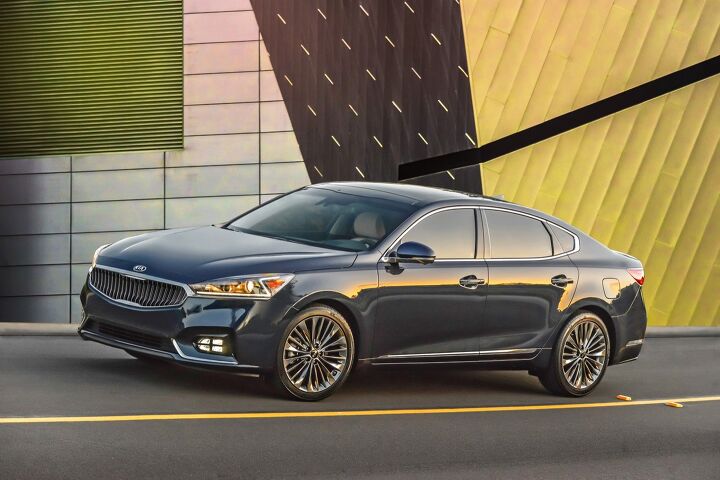
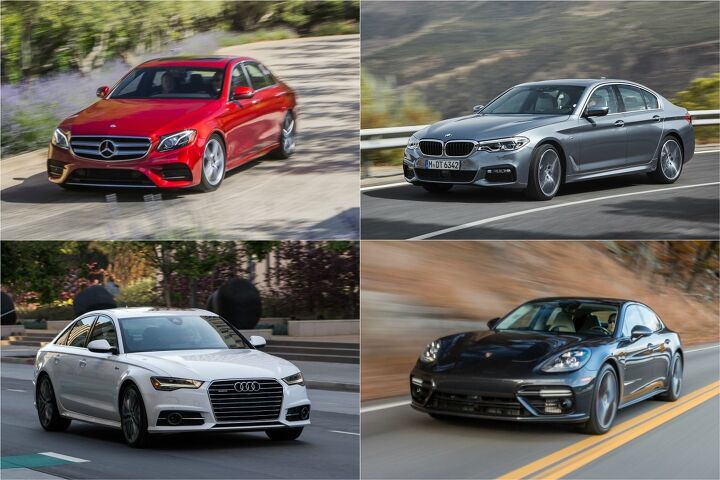

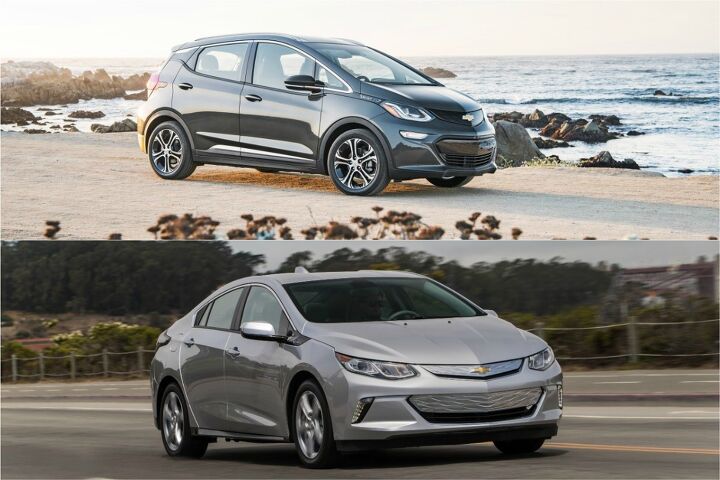


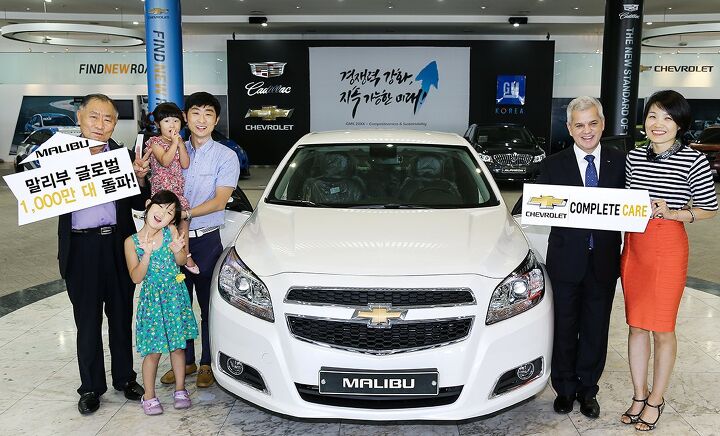
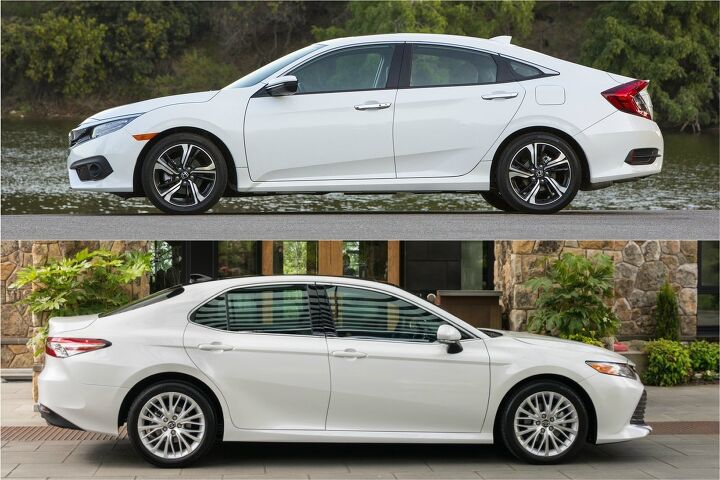

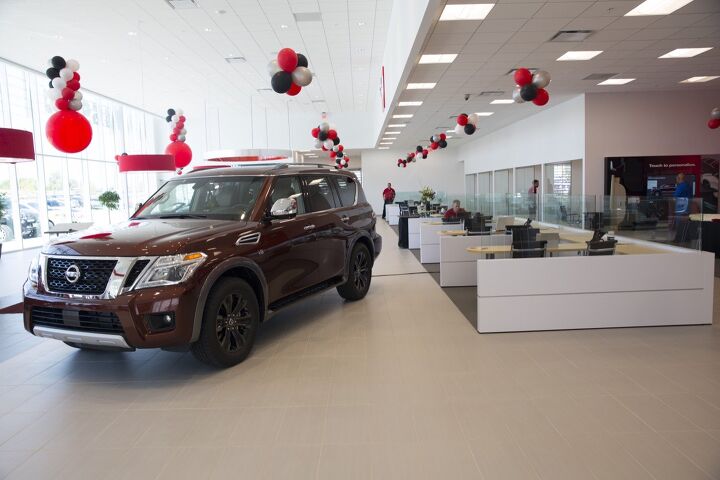

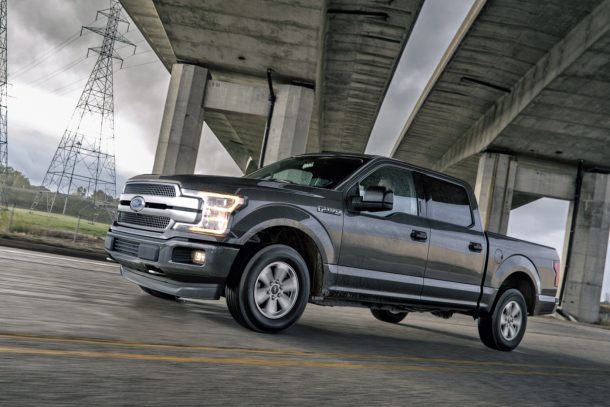
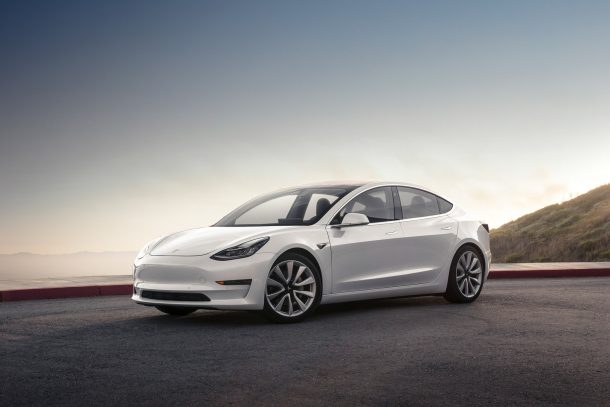
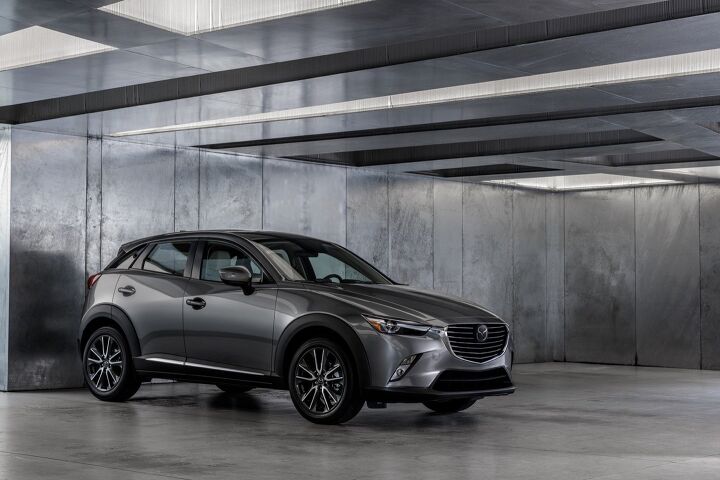
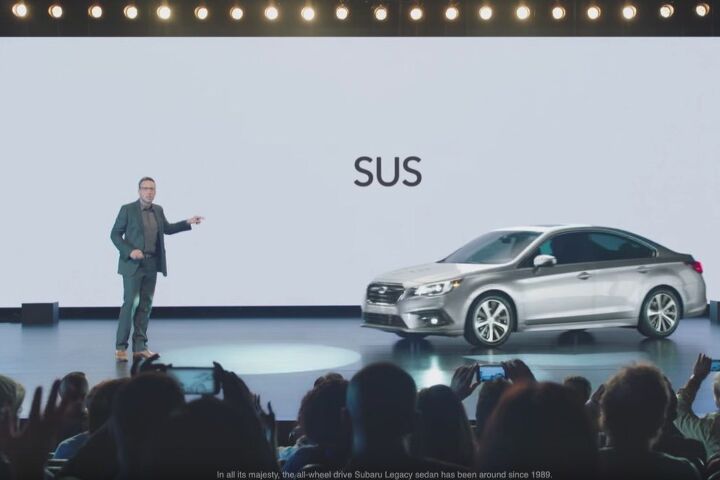












Recent Comments